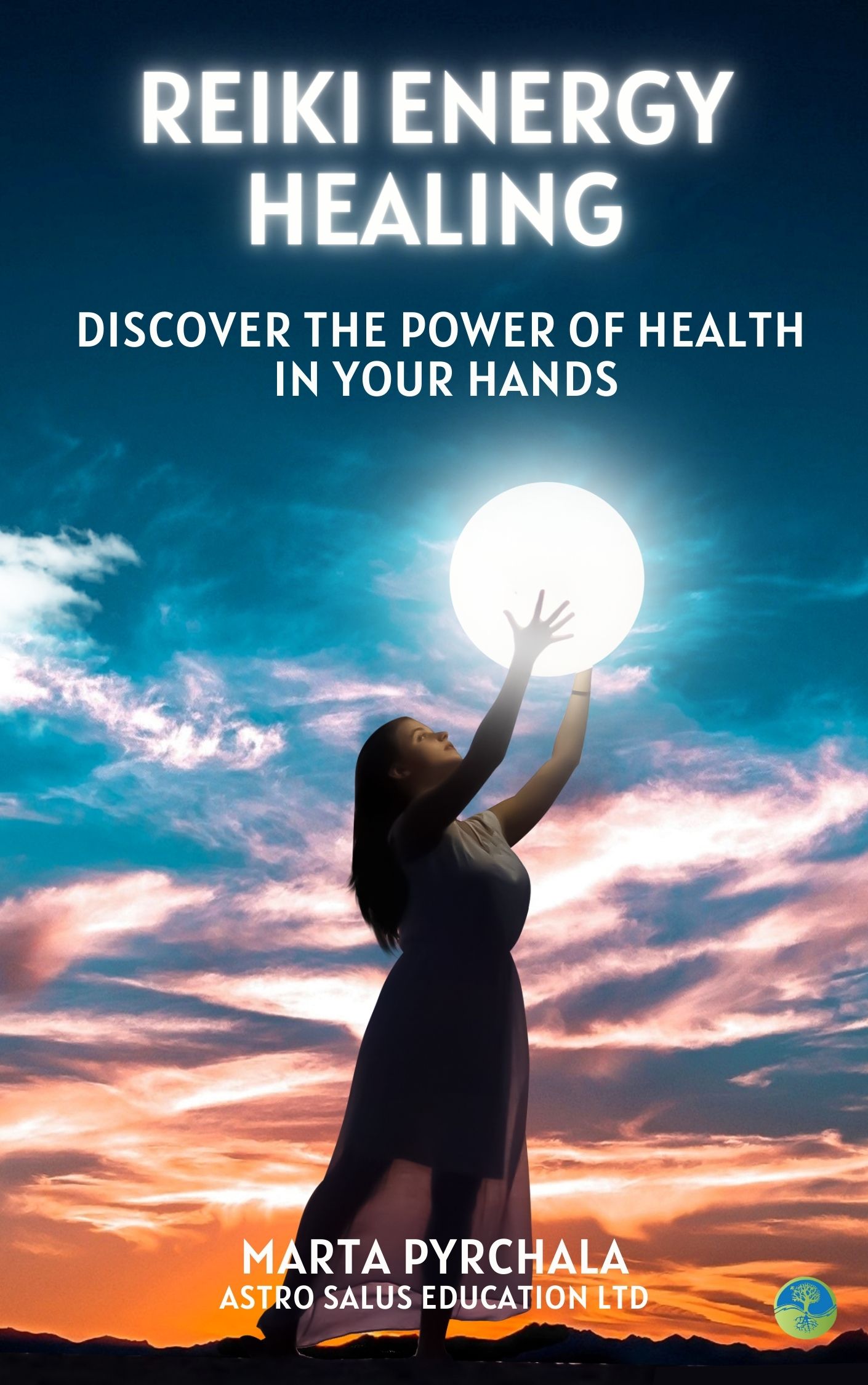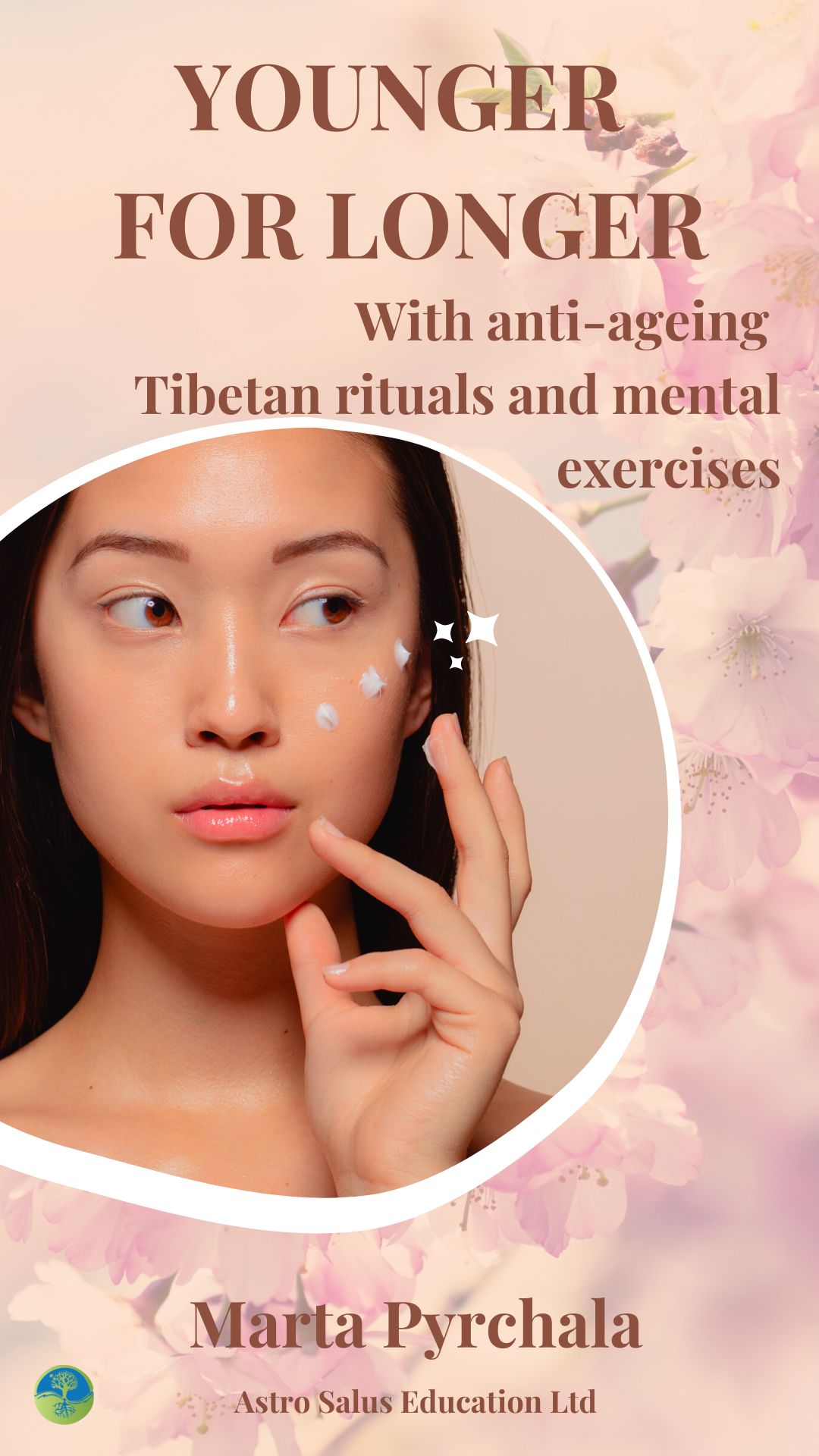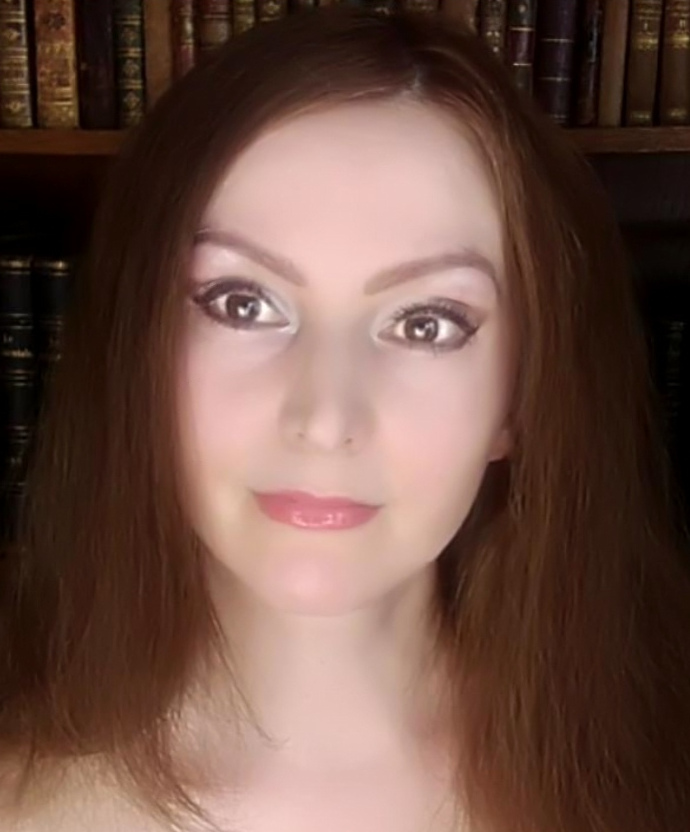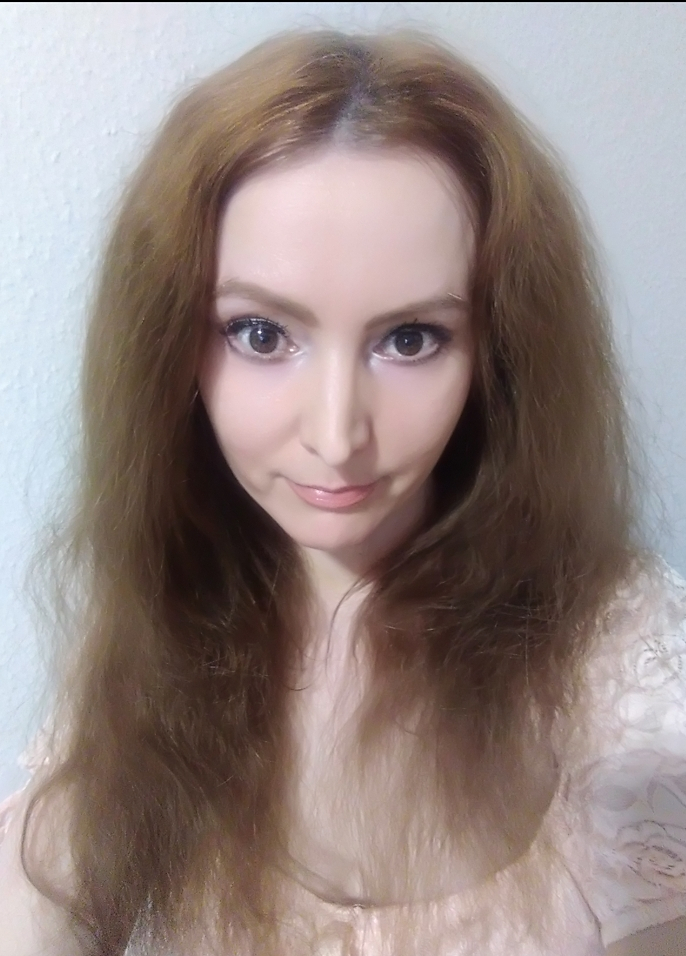HEAL YOUR EMOTIONS with effective and tested mental techniques
 Discover the path to a healthier, stress-free life with the book: "RELAX - Effective and Tested Mental and Physical Techniques to Get Rid of Stress."
Discover the path to a healthier, stress-free life with the book: "RELAX - Effective and Tested Mental and Physical Techniques to Get Rid of Stress." In a world filled with constant demands and pressures, stress has become a common companion.
But it doesn't have to be that way.
This comprehensive guide unveils a treasure trove of relaxation techniques designed to help you banish stress.
Besides, thanks to exercises from the book, you will strengthen your immune system, and embrace a more youthful, vibrant life.
Here, you will get to know more about my book "Relax - Effective and Tested Mental and Physical Techniques to Get Rid of Stress".
You are here: Main page> Books> RELAX
What you will find here:
1. Description of the book by Marta Pyrchala "RELAX - Effective and Tested Mental and Physical Techniques to Get Rid of Stress"
2. Table of content of the book by Marta Pyrchala "RELAX - Effective and Tested Mental and Physical Techniques to Get Rid of Stress"
3. Example of a chapter of the book "RELAX - Effective and Tested Mental and Physical Techniques to Get Rid of Stress"
4. How to buy the e-book "RELAX - Effective and Tested Mental and Physical Techniques to Get Rid of Stress"




Description of the book by Marta Pyrchala "RELAX - Effective and Tested Mental and Physical Techniques to Get Rid of Stress"
 Welcome to the official website for "Relax - Effective and Tested Mental and Physical Techniques to Get Rid of Stress."
Welcome to the official website for "Relax - Effective and Tested Mental and Physical Techniques to Get Rid of Stress." Our mission is to empower you with the knowledge and techniques you need to combat stress effectively and improve your overall quality of life.
About the Book:
Explore the book's comprehensive content, covering everything from understanding stress and its impact on health to simple relaxation techniques.
You will find here also relaxing physical and breathing exercises that can help you find your inner calm.
Dive into the world of meditation, relaxing acupressure, calming massage, and more as you learn to banish stress from your life.
Why "Relax" Matters:
Stress isn't just an inconvenience; it's a threat to your well-being.
Discover how reducing stress can boost your immune system, promote emotional and physical health, and even slow down the aging process.
With "Relax," you have the opportunity to take control of your life and embrace a more relaxed, healthier future.
Get Started Today!
Ready to take the first step towards a stress-free life?
Order your copy of "Relax" now and embark on a journey towards a healthier, happier you.
Don't let stress define your future; let relaxation be your guide.
Up to the site
Table of content of the book by Marta Pyrchala "RELAX - Effective and Tested Mental and Physical Techniques to Get Rid of Stress"
 Download the part of chapter of the book RELAX - Effective and Tested Mental and Physical Techniques to Get Rid of Stress
Download the part of chapter of the book RELAX - Effective and Tested Mental and Physical Techniques to Get Rid of Stress Table of content of the book by Marta Pyrchala Relax - Effective and Tested Mental and Physical Techniques to Get Rid of Stress
CHAPTER 1. Stress. Introduction 10
Introduction 10
What is stress? 10
Stress is a specific reaction of the body to conditions that exist in the external or internal world. 10
Psychology of stress 10
Three main strands to the concept of psychological stress: 10
Psychological stress 14
Factors of stress 16
Phases of mental stress 18
Reactions to stressors 18
Task 20
Holmes and Rahe stress scale 20
Selection of stress 20
Summary 22
Chapter 2. The impact of stress on health 24
Introduction 24
The body's response to stress 24
Effects of stress on the body 24
The effects of stress on the digestive system: 26
Further consequences of stress 26
Psychological consequences of stress 28
Other behavioural and psychological symptoms of stress 30
Effects of stress experienced during pregnancy 30
Effects of a stressful pregnancy on the child's emotional state 32
Positive effects of stress 32
Types of stress 32
Summary 34
Chapter 3. Simple relaxation techniques 36
Introduction 36
Simple and effective ways to relax 36
Exercise 1. Counting down from 100 to 1 36
Attention: 36
Exercise 2. Relaxation with focus on the breath 36
Exercise 3: Your safe place 38
Other ways to relax 38
Walks in the forest 38
Stroking animals 38
Watching funny films 38
Hugging loved ones 38
Hot baths with relaxing herbs and oils 40
Conversations with optimistic friends 40
Listening to relaxing music 40
Meditation 42
Playing with children or animals 42
Reading humorous books 42
Art 42
Solving crosswords 42
Drinking lemon balm, chamomile, eating nuts 42
Physical exercise 42
Breathing exercises 44
Resolving on an ongoing basis and not ignoring your problems 44
Summary 44
CHAPTER 4. Physical and breathing exercises to combat stress 46
Introduction 46
Task 46
Simple relaxation exercises 46
Physical exercise to help reduce stress 48
Stretching phases 48
Task 50
Yoga 50
How do yoga exercises work? 50
How to perform yoga asanas? 52
Who can practise yoga? 52
Relaxing asana 52
Tai-chi 52
Effects of tai-chi on health 54
Qi gong 54
Effect of qi gong on the body 54
The use of qi gong in illnesses with a special focus on psychosomatic illnesses 56
Preparation for the relaxation qi gong breathing session 56
Task 58
Relaxing mudras 58
How to perform mudras 58
Examples of relaxation mudras 58
Task 58
Relaxing breathing exercises 60
How pranayama works on the body 60
Methodology for performing pranayam 60
Examples of pranayam 60
Principles: 60
Summary 64
CHAPTER 5. Relaxing acupressure and massage 66
Introduction 66
Relaxing acupressure 66
What is cun 66
How to perform an acupressure treatment 66
Acupressure for depression 68
Acupressure for nervousness 68
Task 68
Relaxing massage 68
Grips in classical massage 68
Types and frequency of massages 70
How massage works on the body 70
Contraindications to massage 72
Carrying out a massage 74
Massage directions 74
Massage techniques 76
1 Stroking 76
2 Rubbing 76
3 Kneading 76
4 Occlusion 76
5 Vibrations 80
6 Rolling 80
7 Pressing 80
Summary 80
CHAPTER 6. Biofeedback and eutony 84
Introduction 84
Task 84
Biofeedback 84
The word 'biofeedback' means feedback on the body's processes. This is known as biological feedback. 84
Indications for biofeedback 84
The essence of biofeedback 86
How to perform "natural" biofeedback? Exercise 86
Eutony 86
How to practise the eutonic state? 86
Examples of euthony exercise 88
Effects of exercising eutony 88
Task 88
Summary 88
CHAPTER 7. Music therapy
Treatment with music in the past 90
Research related to the effects of music on health 92
The influence of music on human psychophysiology 92
Examples of relaxing music 92
The influence of music on human psychophysiology 94
Summary 94
CHAPTER 8. Autogenic training and progressive muscle relaxation (Jacobson therapy) 96
Phases of the progressive muscle relaxation exercise 96
Application of progressive muscle relaxation 96
Procedure for performing the treatment 98
Task 102
Schultz autogenic training 102
When is it a good idea to use autogenic training? 102
Effects of Shultz autogenic training 102
How to practise autogenic training? 102
Procedure for a complete autogenic training session 104
Task 104
Summary 106
CHAPTER 9. Meditation 108
Introduction 108
Task 108
Meditation 108
Effects of meditation 110
Methods of getting into a meditative state How to meditate? 112
You can choose the following methods to put yourself into a meditative state: 114
How do you learn not to focus on flowing thoughts and emotions during such a meditation? 116
Summary 116
CHAPTER 10. Autosuggestion, affirmations and self-hypnosis as an aid to stress management 120
Introduction 120
In this chapter you will learn about the use for relaxation: 120
Autosuggestion 120
Hypnosis and self-hypnosis 122
Characteristics of the stages of hypnosis 122
Light hypnosis 122
Mid-stage hypnosis 122
Deep hypnosis 122
Example of an introduction to self-hypnosis 124
Affirmations 132
Rules for turning negative thoughts into positive ones 132
Rules for presenting negative events in your mind 134
Techniques for affirmations and discovering subconscious causes of stress 134
How can you get to the source of stress with affirmations? 136
Task 136
Summary 138
CHAPTER 11. The power of visualisation for relaxation 140
Task 140
Visualisation 140
Visualisation is a process in which you consciously direct your imagination. The aim of this activity is to achieve a specific goal. 140
The power of imagination in action 140
Conditions for effective visualisation 142
Exercise 1 142
Exercise 2 142
Exercise 3 142
Exercise 4 144
Influence of imagination on the mind 144
Visualising peace 144
Principles: 144
Visualising the release of stress 146
The three selves 146
The metaphysical method of Evelyn Monahan 146
Scheme of the metaphysical method 146
General procedure for performing metaphysical treatment techniques 148
"Introduction 148
The central, core part: 148
Completion: 150
Task 150
Scheme of the metaphysical method 150
Visualisation is a process in which you consciously direct your imagination. The aim of this activity is to achieve a specific goal. 152
Summary 150
CHAPTER 12. Diet, aromatherapy and herbs for stress 154
In this chapter you will learn about topics such as: 154
Aromatherapy 154
How to use essential oils 154
List of essential oils that relieve stress and improve mood 154
Diet for stress 156
How should food that promotes the development of stress resistance interact? 156
What foods promote increased resistance to stress? 156
What should be avoided when stressed? 158
Plants with a calming effect 158
Calming effects include: 158
Antidepressants work: 158
Adaptation-enhancing effects (increasing resistance to exertion and stress) have been shown: 158
Memory and concentration will aid: 160
How to prepare herbs? 160
Relaxing and mood-enhancing oils 160
What foods promote increased resistance to stress? 160
Summary 160
CHAPTER 13. Controlling your emotions. Laughter therapy 164
Introduction 164
Negative emotions and thoughts 164
Exercise to help release negative emotion 164
Task 168
Achieve relaxation through laughter 168
Endorphins: 168
Summary 168
CHAPTER 14. Assertiveness and its rules 172
Selected assertiveness techniques 172
Elements of assertive refusal 174
Types of softening in assertive refusal 174
Types of softening in assertive refusal 174
Summary 178
CHAPTER 15. Organising your time properly to counteract stress 180
Introduction 180
Task 180
Organisation of time 180
Get your workplace in order. 180
Task 180
Find the time. How do you do it? 180
How much time to plan? 182
Prioritise 182
How to prioritise - different methods 184
ABC method 184
80% 186
Action plan 186
Task 186
Elimination of unnecessary activities 186
Useful exercises 188
Exercise 2 188
Exercise 3 190
Exercise 4 190
Exercise 5 190
Task 190
Summary 191
Up to the site
Example of a chapter of the book "RELAX - Effective and Tested Mental and Physical Techniques to Get Rid of Stress"
Download the Table of content of the book RELAX - Effective and Tested Mental and Physical Techniques to Get Rid of StressChapter 2 The impact of stress on health
Introduction
In this chapter you will learn how stress affects the body, including pregnant women and their babies.In addition, you will learn about the psychological effects of stress.
On the end you will get know relaxing visualisation to help you get rid of stress.
The body's response to stress
 Stimulated by a stress factor, the cerebral cortex sends relevant information to the hypothalamus.
Stimulated by a stress factor, the cerebral cortex sends relevant information to the hypothalamus. The hypothalamus sends to the anterior lobe of the pituitary gland 'command' to release the hormone ACTH into the blood.
This hormone causes the release of corticosteroids from the adrenal cortex.
They regulate the release of glucose into the blood, water-electrolyte balance and metabolism.
In addition, the hypothalamus stimulates the adrenal cortex to release adrenaline and noradrenaline.
This raises blood pressure and increases glucose levels in the body.
ACTH secretion is controlled by both the endocrine and nervous systems.
Stress is intensified when there is no way to remedy it. Rats that did not have the opportunity to escape from electrocution endured stress less well.
Consequently, they were more likely to suffer from psychosomatic complaints.
In addition, Locke et al (1984) found that stress decreases K-cell activity.
Chronic stress reduces the body's production of T-lymphocytes and macrophages, i.e. decreases resistance to disease (Ironson, 1997; Irvin, 1990; Irvin 1990 b; 1994; Linn, 1981).
Excessively experienced stress also impairs DNA repair processes (Kiecolt- Glaser, 1985).
Effects of stress on the body
Stress has a wide-ranging effect on the body. In the case of the circulatory system, for example, stress leads to:◦ Increase in heart rate,
◦ Increase in blood pressure,
◦ Vasodilatation.
Prolonged exposure to the above factors can cause arteriosclerosis, hypertension, ischaemic heart disease and myocardial infarction.
The effects of stress on the digestive system:
◦ The vagus nerve is stimulated, so that gastric peristalsis is reduced and gastric acid secretion is stimulated.◦ Stress causes the release of the hormone CRH, which stimulates the secretion of ACTH, which in turn affects the action of glucocorticosteroids. These substances reduce the secretion of prostaglandins, which reduces the amount of protective gastric mucus. These factors increase the possibility of gastric ulcers.
◦ In the case of the small intestine, its peristalsis is reduced. Fewer digestive enzymes of the intestine are secreted and the food content contains too little water. This can cause constipation.
◦ Stress also has a negative effect on the large intestine. It increases its peristalsis, which is the cause of diarrhoea.
The essence of protection against the negative effects of stress is the ability to cope with it appropriately.
Various types of relaxation techniques serve this purpose.
These will be discussed later in this book.
Further consequences of stress
Chronic stress can cause ailments such as:◦ Headaches, neck or back pain,
◦ Trembling limbs,
◦ Heartbeat,
◦ Dry throat,
◦ Sleep problems and insomnia,
◦ Peptic ulcer disease of the stomach and duodenum,
◦ Diarrhoea, constipation,
◦ Nausea,
◦ Irritable Bowel Syndrome (IBS) - irritable bowel syndrome,
◦ Hypertension,
◦ Susceptibility to infections (colds, flu),
◦ Skin conditions (boils, ringworm).
Stress catalyses the disease process and accelerates ageing by wearing down the body faster.
In addition, stress affects the hunger and satiety centres in the hypothalamus.
This is the cause of irregular eating, overeating and eating in a hurry.
Such behaviour results in:
◦ Obesity,
◦ Hypercholesterolaemia,
◦ Hyperglycaemia,
◦ Myocardial infarction,
◦ Stroke.
In addition, the skin under stress becomes grey and less elastic. In addition, they appear:
◦ Wrinkles,
◦ Sightedness,
◦ Skin eczema.
The body's resistance to infection decreases and the stressed individual's well-being deteriorates.
Psychological consequences of stress
 Stress gives rise to many symptoms from the psyche. These include, for example:
Stress gives rise to many symptoms from the psyche. These include, for example:◦ Distraction,
◦ Insomnia,
◦ A feeling of unease,
◦ Falling into addictions,
◦ Breathing difficulties,
◦ Neurosis,
◦ Depression,
◦ Hostile attitude towards people,
◦ Dissatisfaction with sex,
◦ Suicidal thoughts,
◦ Problems in relationships.
Other behavioural and psychological symptoms of stress include:
◦ Anger,◦ Disengagement,
◦ Nervousness,
◦ Anxiety,
◦ Depression,
◦ A sense of guilt,
◦ Envy,
◦ Reduced self-esteem,
◦ A sense of lack of control,
◦ Inability to concentrate,
◦ Intrusive thoughts,
◦ Increased fantasising,
◦ Passive or aggressive behaviour,
◦ Nervous tics,
◦ Gnashing of teeth,
◦ Excessive attraction to alcohol,
◦ Increased caffeine consumption,
◦ Nail biting,
◦ Aversion to sex.
Effects of stress experienced during pregnancy
The results of studies on the effects of stress on pregnancy indicate that in the short term, stress does not affect the development of the baby.However, sustained and long periods of severe stress can increase the risk of preterm birth and pregnancy complications.
In addition, chronic stress in pregnancy can result in miscarriage, as adrenaline triggers uterine contractions.
Doctors have noticed that newborn babies of mothers who have experienced prolonged stress during pregnancy have a lower birth weight.
This is because stress hormones constrict the blood vessels that carry nutrients and oxygen through the placenta to the foetus.
Therefore, the unborn babies receive less nutrients and oxygen. For this reason, the children of stressed women are already malnourished in the womb.
Newborns of stressed mothers may also be more irritable, tearful and their nervous system is less well developed.
This problem results in delayed development of motor skills in the future.
Many of the negative correlations between stress and health arise as a result of ineffective stress management methods (or lack thereof), rather than as a direct result of the stress experienced.
Common reactions to stress, unfortunately even in pregnant women, are smoking, abusing coffee, drinking alcohol, skipping meals or eating a poor diet (eating fast food). Rather than helping, these behaviours escalate psychological tension, yet good health practices are crucial for mother and baby.
Effects of a stressful pregnancy on the child's emotional state
A genetic difference in the children of stressed mothers makes them more susceptible to stress.As a result of this problem, these children react much more quickly to a stressful stimulus than their peers.
This reaction takes place through their thoughts and endocrine system and therefore affects their emotions and body.
In addition, such children tend to act impulsively and are more prone to emotional problems.
In addition, research has indicated that children whose parents were victims of domestic violence are more likely to develop depression.
Visualising the release of stress
Sit or lie down comfortably and close your eyes.Relax mentally and physically. Imagine you are in nature.
Embrace the place and feel it with all your senses.
See a waterfall nearby. Walk up to it.
Go under the cascade of water.
Allow it to cleanse your insides, removing stress and nervousness.
Feel the stress slowly leave your body and soul.
Stay in this state for as long as you like.
Enjoy it.
Then come out from under the waterfall. See a mysterious good woman.
She is holding a cup with a special drink in her hands. It is a drink of relaxation and relaxation.
Take this cup from her hands and slowly drink.
With each sip, feel the wonderful, relaxing wave of peace fill your mind, body and soul. Stay in this state for as long as you like.
Then slowly return to your usual, but already peaceful, state of mind.
Summary
You already know what the effects of stress on the body and psyche can be.Scientists have proven that stress has a negative effect not only on mood, but also on the human body.
Stress disrupts the functioning of the entire body and causes faster ageing. In addition, stress increases susceptibility to infections.
In addition, long-term stress increases susceptibility to cancer.
Why does this happen? Because stress reduces the production and efficiency of the immune bodies that eliminate cancer cells.
The "father of stress" is the Canadian physiologist, Hans Seyle. He distinguished between two types of stress:
◦ Distress (bad stress) - paralysing, bringing suffering and mental disintegration,
◦ Eustress (good stress) - motivating effort and achievement in life.
From the following chapters, you will learn how to get stress under control and restore your calm.
Up to the site
How to buy the e-book by Marta Pyrchala "RELAX - Effective and Tested Mental and Physical Techniques to Get Rid of Stress"
 Tired of stress taking a toll on your health and happiness?
Tired of stress taking a toll on your health and happiness? "Relax - Effective and Tested Mental and Physical Techniques to Get Rid of Stress" is your ultimate guide to reclaiming control over your life.
Dive into a world of relaxation with our proven techniques that combat stress, improve well-being, and boost your vitality.
Say goodbye to sleepless nights and chronic anxiety and fatigue.
"Relax" offers you the tools to rejuvenate your mind and body.
Don't let stress dictate your future. Unleash the power of relaxation and experience life to the fullest.
HOW TO BUY THE BOOK
Currently, you can use two ways to buy e-book by Marta Pyrchala "RELAX - Effective and Tested Mental and Physical Techniques to Get Rid of Stress":
Soon printed versions will be available, and later audiobooks.
The information about it will be on the web page and in News.
Up to the site
October, 08, 2023
Observe me:
